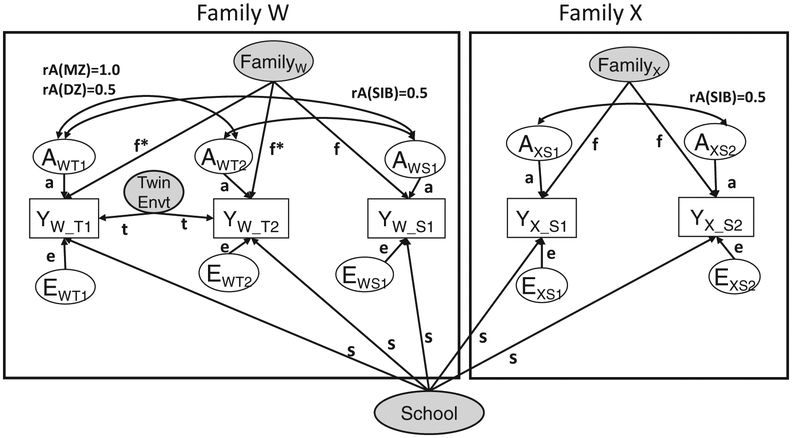FIGURE 2.
The Twin-Sibling-Classmate model.
Note: Shown are two examples of family structures in Project TALENT: Family W with a set of twins and one other sibling; and Family X, with a sibling pair unrelated to W but attending the same school. The design of twins nested within sibling sets nested within schools allows sources of environmental resemblance on measure Y among siblings to be partitioned into three components (shown in gray ovals): family effects (with loading f, twin-specific effects (t), and school effects (s). Other variation is attributable to additive genetic effects (A, with loading a) and individual-specific environments and measurement unreliability (E, e). The expected correlations among A components are 1.0 for MZ twins and 0.5 for DZ twins and full siblings. The design can be extended to include half- and step-siblings and to estimate the genetic correlation across sexes. To the extent t > 0, the f parameter is reduced for twins (indicated by f*).

